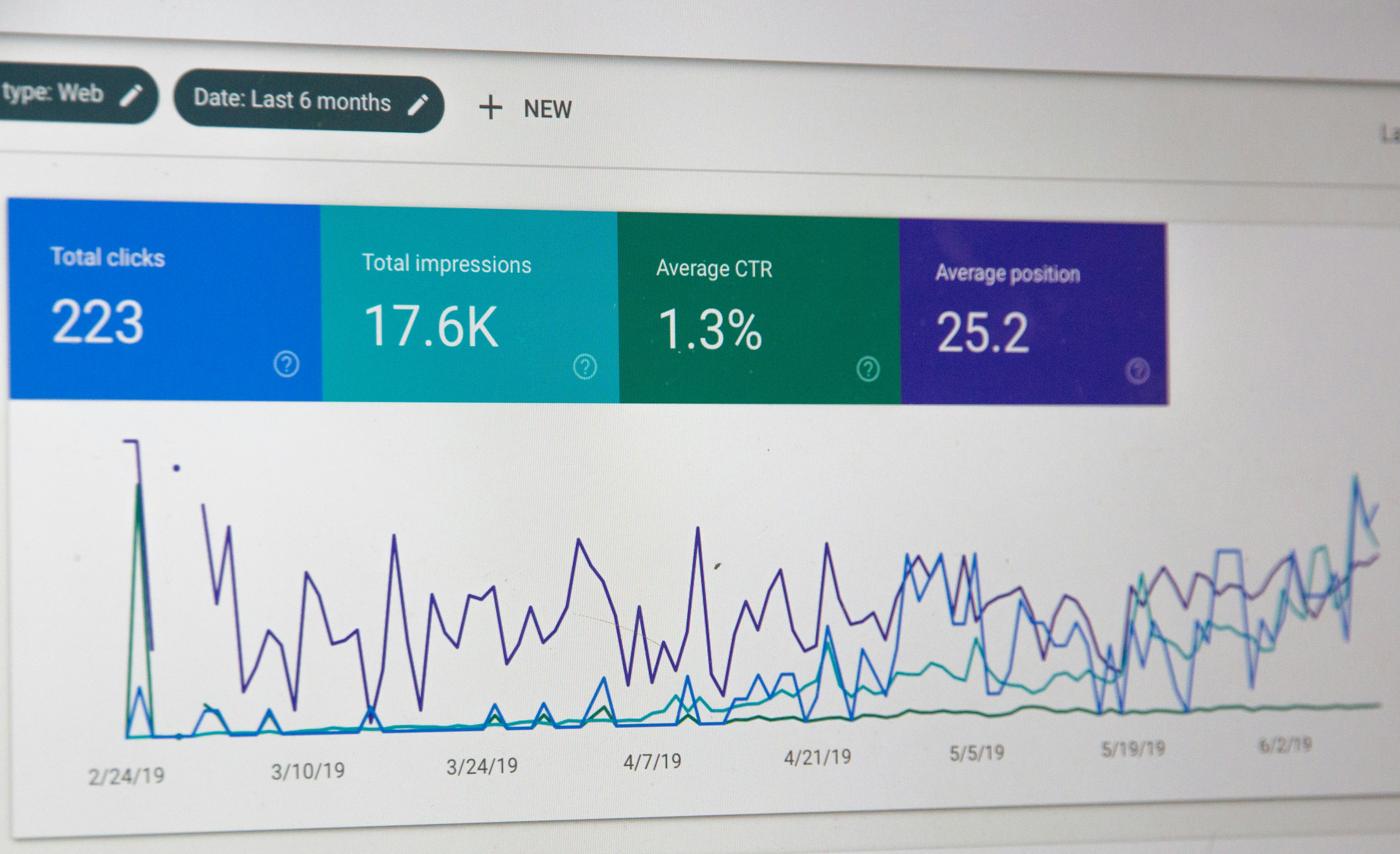12 Effective Data Analysis Tools to Boost Creativity
by WriteSeen
Navigating the digital landscape can be a daunting task, especially for creatives seeking innovative ways to elevate their work. Enter effective data analysis tools—your gateway to unlocking new insights and enhancing creativity.
In this article, we explore the essential tools that empower writers, artists, filmmakers, and musicians to harness data's power, drive collaboration, and push creative boundaries. Let's get started on this exciting journey!
1. Power BI: Visualize Your Data
Power BI transforms raw numbers into visually digestible insights. For creators weaving narratives or seeking audience engagement, visualization is crucial. Power BI offers a collaborative and intuitive platform that integrates seamlessly with Microsoft products like Excel and Teams. This ensures your data remains accessible and shareable for collaborative projects.
- AI-Powered Insights: Power BI's AI capabilities automate machine learning, making complex analysis accessible. Harnessing this power elevates your storytelling with data-driven narratives.
- Custom Dashboards: Tailor dashboards to your project needs, enhancing personal and team data experiences. This feature allows you to focus on what truly matters—your creative vision.
- Case Studies and Inspiration: Remember how GE leveraged predictive analytics in Power BI for substantial cost savings? These real-world applications show the potential of merging creativity with sophisticated data tools.
Use visual tools to turn data into stories that captivate your audience.
2. Tableau: Interactive and User-Friendly
Tableau provides a platform that is as flexible as it is powerful. Perfect for those who think in visuals, Tableau transforms data into interactive, engaging dashboards. These user-friendly features empower creators to bring their ideas to life with clarity.
- Drag-and-Drop Simplicity: Tableau's drag-and-drop interface supports non-tech users in focusing on data presentation instead of technical challenges.
- Diverse Data Integration: Connect various data types for rich visual representations of your creative processes. Whether you're an artist tracking trends or a writer analyzing reader feedback, the possibilities are vast.
- Engaging Storytelling: Stand out by using Tableau to build narrative-driven presentations. For instance, Amazon improved user engagement through effective data storytelling—proof that compelling visuals drive results.
Supporting your creative endeavors relies on tools like Tableau, where insights transform into narratives that resonate with your audience.
3. Google Analytics: Essential for Online Creators
In our digital landscape, understanding audience behavior is key for online creators. Google Analytics provides essential insights, making it an indispensable tool for those striving to broaden their reach—whether that's artists, writers, or any digital creator aiming to expand their influence.
- Real-Time Reporting: Quickly adapt to audience trends with real-time feedback. Instant updates offer the flexibility to modify strategies on the fly.
- Advanced Segmentation: Explore detailed demographic insights for targeted content creation. This personalizes experiences and resonates deeper with your audience.
- Comprehensive Campaign Monitoring: When integrated with Google Ads, you get complete campaign oversight, ensuring your marketing efforts align with project goals.
Creating custom dashboards tailored to your creative journey can transform your approach and enhance your projects' reach.

4. Apache Spark: Speed and Scalability
Apache Spark is designed for managing large data quickly. Its real-time processing capability opens new opportunities for creatives like filmmakers or musicians who deal with massive datasets, offering the speed and scalability needed for impactful projects.
- Open-Source Flexibility: Spark's open-source nature means it’s highly customizable, perfect for creative data processing strategies without breaking the bank.
- Multi-Language Support: With support for Java, Scala, and Python, Spark fits comfortably within diverse tech settings.
- In-Memory Processing: Real-time processing offers significant speed improvements, allowing you to respond swiftly to data cues. Think of how PayPal uses Spark for sophisticated real-time fraud detection—it’s the same level of innovation applied to your creative endeavors.
Using Apache Spark means you can confidently handle large amounts of data without sacrificing agility or speed.
5. Excel: The Versatile Tool for Creatives
Despite newer tools on the market, Excel remains a powerful ally for creatives. Its versatility is unmatched, providing essential features to organize and analyze data crucial for structured creative work like budgeting for your next project or tracking creative inputs.
- Power Query Efficiency: Transform data with ease, even without coding knowledge. This means more focus on your creative tasks and less on technical hurdles.
- Robust Formulas and Functions: Excel's range of formulas allows custom data manipulations tailored to your specific needs.
- Engaging Data Presentation: Use pivot tables and charts to present your data in an engaging manner, aligning with your creative vision.
By automating repetitive tasks with macros, Excel frees up more time for creativity, placing you firmly in the driver’s seat.
6. R Programming: Deep Statistical Analysis
For large data sets requiring detailed analysis, R programming provides the statistical depth creators need. Whether you're a musician analyzing streaming data or a writer examining reading patterns, R helps uncover insights that fuel innovation.
- Publication-Quality Visuals: R excels in creating high-quality plots for detailed presentations, perfect for visual communication of dense data.
- Community-Driven Innovation: Being open-source means R is constantly evolving, driven by a vibrant community offering new packages and ideas.
- Broad Application Support: From machine learning to bioinformatics, R supports a wide range of applications, empowering creative data explorations beyond traditional limits.
R integration with tools like Shiny enhances your ability to create interactive web applications, expanding the potential of your projects.

7. Python: Flexible and Intuitive
Python’s flexibility makes it particularly inviting for creatives wishing to dive into data science without feeling overwhelmed. Its libraries offer robust support for everything from data analysis to visualization, making it a foundational tool for exploring any creative data path.
- Accessible Language: Python's readability and simplicity make it ideal for anyone, from novice to expert—no technical barriers here.
- Visual and Data-Driven Creativity: Libraries like Matplotlib and Seaborn help create aesthetic visualizations that ignite your audience's imagination.
- Interactive Analysis with Jupyter: Interactive environments like Jupyter Notebook provide a seamless blend of code, data, and text to document and share your analyses.
Through Python, leverage libraries like TensorFlow to push the boundaries of your projects. Embracing Python's versatility nurtures creative potential across diverse disciplines.
8. D3.js: Customizable Visualization
D3.js empowers creators to transform data into stunning, custom visualizations. This tool is perfect for visual artists and designers who want to captivate audiences with eye-catching presentations and interactive features. It's not just about displaying data; it's about telling a story that engages and intrigues.
Why Choose D3.js?
- Web Standards Compliance: Leveraging SVG, HTML, and CSS, D3.js ensures your graphics are viewable across different browsers without compatibility issues, blending seamlessly into your creative projects.
- Detailed API Control: With D3.js, you're the master of design. Full control over graphics lets you tailor visuals to fit the specific narrative you wish to communicate.
- Interactivity and Animation: Create dynamic animations and interactive elements that invite viewer participation and keep your audience engaged with your message.
Captivating visuals make your data unforgettable.
9. SAS: Advanced Statistical Techniques
SAS excels in advanced analytics, allowing you to derive deep insights from intricate data sets. For writers, filmmakers, or game developers, SAS provides the statistical muscle to forecast trends and inform your next big move.
Engage with SAS for Rich Insights
- Predictive Modeling: Anticipate future trends and make informed decisions. SAS's modeling tools help you strategize your creative projects and keep you steps ahead.
- Comprehensive Data Management: The streamlined capabilities ensure your data forms a strong analytical foundation to drive creative decisions.
- Proven Success Stories: Industries like healthcare use SAS to optimize operations and innovate—offering insights into how data can drive breakthroughs in creative fields too.
Using SAS equips you with real-time analytics that fuel dynamic storytelling and strategic decisions.

10. KNIME: Seamless Data Integration
KNIME is a data integration powerhouse. For creative minds, it offers a drag-and-drop platform that fosters creativity through accessible data blending and analysis. With KNIME, you can focus on what really matters: transforming data into creative potential.
Advantages of KNIME
- Simplified Interface: Remove barriers with a user-friendly interface. No need for coding skills—KNIME enables you to experiment and play.
- Community Support: An ever-growing library of extensions allows you to extend capabilities and share ideas, keeping your work cutting-edge.
- Consistent Performance Across Platforms: Whether you work on Windows, Mac, or Linux, KNIME provides reliable analytics, ensuring creativity isn't impeded by technical limitations.
KNIME puts the power of data-driven creativity in your hands, supporting complex projects with simple tools.
11. Qlik Sense: Guided Analytics
Qlik Sense is your partner in self-service analytics. It empowers creators with interactive dashboards and supports data-driven storytelling. For industry professionals seeking the next big project, it provides insightful analytics that reveal hidden potential.
Making Data-Driven Decisions with Qlik Sense
- Associative Model: Easily explore data patterns and relationships, finding the creative connections others might miss.
- Cloud Collaboration: Teams worldwide can access and share insights from anywhere, facilitating seamless collaboration on creative projects.
- Mobile-Ready Design: Create and view analytics on-the-go, ensuring flexibility in how and where you work.
Qlik Sense transforms your data into actionable insights, prompting new ideas and enhancing narrative depth.
12. Looker: Data That Tells a Story
Looker revolutionizes how creators see their work by transforming data into immersive stories. It's not just about analysis; it's about developing compelling narratives that resonate with your audience.
Bringing Creativity to Life with Looker
- SQL-Powered Exploration: Dive deep into your datasets for profound insights that inform your creative direction.
- Shared Dashboards: Promote teamwork with easily accessible dashboards, offering a unified view of your project's progress and direction.
- Seamless Google Integration: Benefit from real-time insights that guide creative decisions, fostering innovation through informed strategies.
Leveraging Looker equips you with the competitive edge to transform data insights into captivating stories that capture imaginations.
Conclusion: Harness the Power of Data for Creative Success
Unlocking the potential of your creativity doesn't have to be daunting. Each tool we've explored here plays a vital role in enhancing how you interpret and implement data for more insightful, impactful work. Whether you're a writer, artist, or industry professional, adopting the right data tools can amplify your creative process and lead your projects to success.
By harnessing these tools, you're not just interpreting numbers—you're creating stories, scouting trends, and transforming insights into opportunities for growth and discovery. Dive in, explore, and let data lead your creative journey to new heights.
TAGS